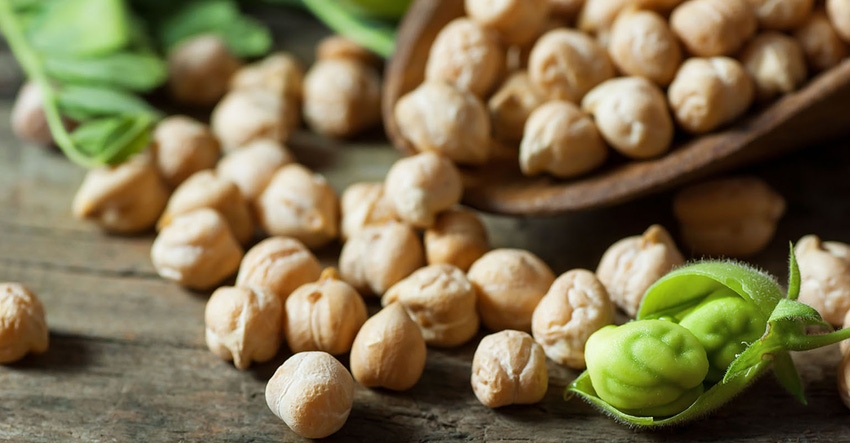With the ability to meet consumers' sensory and nutritional needs, pulse ingredients have quickly established themselves an integral ingredient alternative.

Research from the University of Nebraska indicates that approximately 25% of the United States' population follows a gluten-free diet, likened to more than 70 million people. While a portion of this group avoids gluten due to a diagnosed intolerance to gluten known as celiac disease, others do so based on perceived health benefits. Though evidence to support these perceived health benefits is mixed at best, it has still driven a significant change in consumer behavior on a global scale.
Gluten proteins are a mixture of storage molecules found in common ingredients like wheat, rye and barley. Patients diagnosed with celiac disease cannot tolerate those proteins and avoid certain foods. Right now, a gluten-free diet is the only proven effective therapy for the disease. In the past, the number of gluten-free products available was relatively limited and only relevant to the medical community and those living with medically diagnosed celiac disease. As the availability and prevalence of gluten-free options have increased, more consumers than ever have begun to opt for them when possible.
Based on the trends mentioned above, products containing gluten automatically lose one-quarter of the potential consumer market. Based on this market sizing, food and beverage producers not offering gluten-free products should plan to do so as soon as possible. One of the obstacles producers have faced in the past is the availability of gluten-free ingredients that can effectively supplant gluten-inclusive grains. Fortunately, such alternatives are now available. Pulse flours and pea proteins—versatile, nutritious and inexpensive ingredients—are rapidly gaining popularity.
Presenting: Pulses
"Pulses" describes a category of food harvested only for their seeds, including legume plants like peas, beans, lupines and lentils. These ingredients have been used globally for hundreds of years, most often in Asia, Africa and North America. From soups to spreads to breakfast items and more, they have stood the test of time as a favored ingredient by consumers.
Perhaps the most notable feature of pulses is their markedly high protein content—depending on the specific pulse, anywhere from 20% to 40%. Set apart as a sustainable source of protein, they are often used as a protein enrichment agent, specifically in pasta and bread. Additionally, they are high in dietary fibers and complex carbohydrates, allowing for end products with a low glycemic index.
Alongside their nutritional value, pulses possess functional properties desirable for food formulation and processing. Highly soluble with significant water and fat-binding capacities, they are relatively comparable to other protein sources, such as soy and whey. Thus, they can be used as a substitute ingredient when considering factors like sensitivities, allergens and taste preferences.
The pulse on pulse flours
Exactly what they sound like, pulse flours describe pulses that are ground into a fine powder and used as an alternative ingredient to traditional wheat flours. Created through a conventional milling process, most often with chickpeas and lentils, pulse flours are high in protein and fiber, and low in sugar. Diets incorporating pulse flours have proven to reduce the risk of diabetes, obesity and heart disease in certain consumers. The key to ensuring maximum usefulness of the ingredient lies in pre-treating pulses to reduce their bean-like flavor.
Researchers ran an experiment to compare crackers made with pulse flours to 100% wheat crackers and found that while crackers made with pulses did sometimes show noticeable discoloration and size discrepancies, they were noticeably preferred by consumers in comparison to the control. To researchers' surprise, pulse flour crackers also boasted a higher level of antioxidant activity, alongside the expected high protein and fiber concentrations.
Giving peas (protein) a chance
Pea production contributes to 26% of the world's total pulse production. Newer to the market than pulse flours but equally as valuable, pea protein is a particularly sustainable ingredient that can replace expensive animal proteins. Its availability, low cost, nutritional value and health benefits are all cited by researchers and producers alike as advantages to incorporating the ingredient more frequently.
One significant workaround that manufacturers must consider when formulating with this product is that pea proteins naturally have a strong, less desirable flavor profile. That said, protein modification may be able to change that, removing some of the existing limitations. The modification process involves enzymatic, chemical and physical alterations that would also improve its functional attributes. These alterations further the potential uses of pea proteins in products like baked goods, dressings and beverages.
Domestic vs. global pulse production
Right now, the global production of pulses totals about 77 million metric tons. U.S. farmers contribute just over 1,100 metric tons to that number, and around 75% of that domestic production is exported internationally. Those high global production levels and large turnaround volumes are primarily due to the growing demand for proteins worldwide as the global population faces rapidly growing nutritional deficiencies. U.S. producers are strongly encouraged to look for opportunities to promote domestic manufacturing and consumption of pulses to stimulate agricultural developments that yield larger quantities in less time—a development that could help impact hunger across the world.
Manufacturers are due to determine whether pulse ingredients could be a valuable additive in their products. As new applications of pulses continue to emerge, their use is only expected to increase. With the ability to meet consumers' sensory and nutritional needs, pulse ingredients have quickly established themselves an integral ingredient alternative.
Bob Wills has worked in the specialty chemical, food additive and ingredient distribution industry since 2008. He is the director of business development, human nutrition, for Barentz, which was formerly Viachem.
About the Author(s)
You May Also Like






